Murut I
12:48
This time I want to share about my peoples. Well about Murut. But I'm not pure Murut..I'm a mix of Dusun and Murut. Well, carry on...

What is Murut?
Murut are one of the indeginous ethnic group in northern inland regions of Borneo. Murut comprise several groups which scattered in parts of Borneo Island in Sabah, Sarawak including in Brunei and Kalimantan, Indonesia. Murut also the last ethnics to renounce headhunting (antaboh) in Borneo. Yup, Murut were once the fearsome headhunter in Borneo. In Sabah, Murut population is around 135, 000 while around 1,200 are found in Brunei.
Murut refers to the people who live in or near the hill. Basically, "Men of the Hill".
There's many sub-groups of Murut's.
Tagal or Tahol, Timugon, Kolor, Bookan or Baukan, Serudung, Paluan, Gana, Tidung, Tangala, Sembakung and Kalabakan.
I'm a Timugon by the way. hahahaha
Maps of wheres the Murut people located.
Tagal or Tahol
Timugon
Kolor
Murut Kolor is a mix of two ethnics which is between Muruts and the Lundayeh people.
Bookan or Baukan
Nabai
Gana
Tangala
Serudung
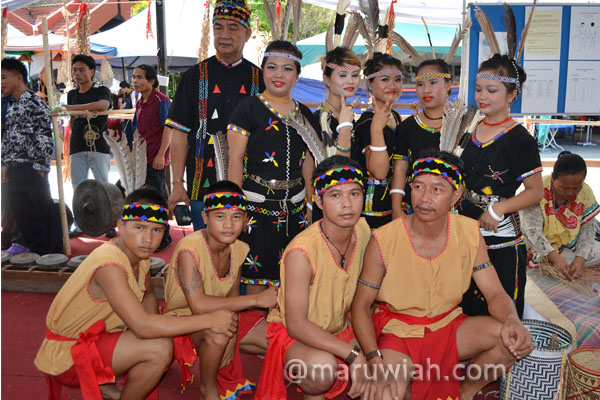
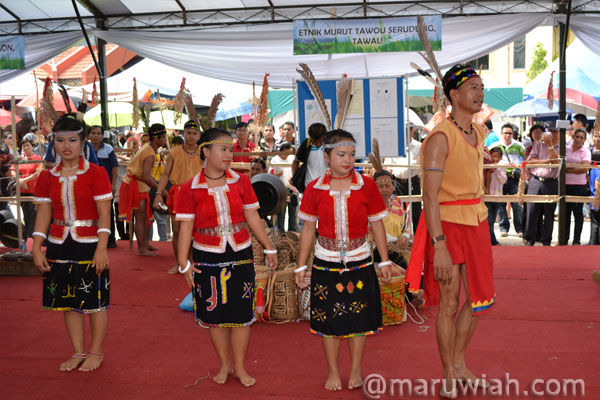
The live of Murut.
Long time ago, the Murut people use to live in a longhouse, usually near the rivers so it will easy to hunt for food, get drinks and travel. But nowadays, everyone live in normal individual house. As far as I am concerned there are no Murut living in longhouses anymore. Trust me I know.
The men were skilled hunters, using blowpipes, spears and hunting wild animals such as deer, birds and wild boar. At the same time they are also cultivate other crops such as corn and tapioca. In addition, they are also hunt in the jungle nearby and fishing.
Belief's
Many of the Murut in Sabah and Brunei is Islam, Cristian, Animisme but there are also some of them that are Pagan. According to Malaysia census data count the Murut in Sabah as about 82% Christian, 13% Muslim and 5% other religions. Brunei statistics reveal that Murut Community is 58% Muslim, 30% "tribal religion" (animisme) and the rest are Christian.
Marriages
Every Murut Weddings
Every Murut Weddings
Murut wedding usually will be held as early as age 15 to 18 years for the boy and 13 years for the girl. In addition, the usual dowry will be asked by the girl's parents Murut are of two buffaloes, one tajau kind of "luster" 1 tajau type "minukul" 1 tajau type "belaying" 1 tajau type "manila" 1 gongs and 1 blowpipe.
Normaly the weddings will be conduct for 5 consecutive days. Within 5 days of marriage, 3 days will be held at the bride's house and 2 days in the house of the male groom. The bride will be adorned with beautiful Murut clothes on the wedding day. The bride will be make up by a group of women known as "tambuloi."
There are a bride to be placed in a special room that has been veiled few expensive pieces of cloth. After that, the bride will be taken out of the room and rice wine or known as "tapai" will be pleased. Therefore, in the next three days, the guest will be celebrating and eating and drinking wine in the house of the bride. Drinking wine in a friendly competition was also held to strengthen family relationships.
After the expiration of three days, they will move to the groom's house and shot "egal" that is gong to say farewell to the bride's family. Once a week at the groom's house, the bride can be visited with the permission of the husband's parents and in-laws. After a month of the wedding, both the bride and groom would go to the bride's house for 4 days and their presence will be honored and served the "tapai". After the end of the 4 days, the 2 of them would go back to the groom's house to settle there permanently or well forever!
Normaly the weddings will be conduct for 5 consecutive days. Within 5 days of marriage, 3 days will be held at the bride's house and 2 days in the house of the male groom. The bride will be adorned with beautiful Murut clothes on the wedding day. The bride will be make up by a group of women known as "tambuloi."
There are a bride to be placed in a special room that has been veiled few expensive pieces of cloth. After that, the bride will be taken out of the room and rice wine or known as "tapai" will be pleased. Therefore, in the next three days, the guest will be celebrating and eating and drinking wine in the house of the bride. Drinking wine in a friendly competition was also held to strengthen family relationships.
After the expiration of three days, they will move to the groom's house and shot "egal" that is gong to say farewell to the bride's family. Once a week at the groom's house, the bride can be visited with the permission of the husband's parents and in-laws. After a month of the wedding, both the bride and groom would go to the bride's house for 4 days and their presence will be honored and served the "tapai". After the end of the 4 days, the 2 of them would go back to the groom's house to settle there permanently or well forever!
Murut Tagol Weddings
Tina'uh (A Tahol or Tagol Wedding Ceremony)
Pinanamung ‘engagement’ ceremony where the bride-price is discussed. The successful conclusion of the settlement of the dowry is then will be celebrated with the drinking of tapai for not longer than 5 days.
Pinanamung ‘engagement’ ceremony where the bride-price is discussed. The successful conclusion of the settlement of the dowry is then will be celebrated with the drinking of tapai for not longer than 5 days.
Kaunsapan / Haunsapan payment or also maybe dowry for the girl consisting of pots and pans and 1 expensive jar usually one week after the ahuod. Often, the girl is now pregnant – otherwise she can still be ‘returned’ to her parents. Wow!
Limpoho often compared to the proper wedding ceremony, a few months after the pinanamung. Exchange of the dowry, which consists of binukul and tiluan, other jars, gongs, beads and cloth, and anything the parents in law desire – nowadays Murut people often use cash, a generator, a TV set…. This ceremony may last a week, and the parents of the girl have to kill a buffalo. If the couple decide to divorce after the limpoho, the man usually loses the bride price.
Tina’uh / Bului final handing over of the dowry, sometimes 20 years after the limpoho. This party lasts not less than 5 days, and involves everybody including the cousins of the two respective families, and of course the entire village or maybe the entire town =.=
Birth
For Murut birth, do not have customs and taboos that particular during pregnancy and childbirth. Normally taboos will happen after the baby was born, usually in terms of naming.
For Murut community, babies born will be called immediately. It aims to avoid any bad things happen to the baby. Therefore, the name is taken very seriously by the Murut community. Therefore, most of the names given are based on nature or by a specific event.
In addition, the names of the Murut are also can be change for some time. This situation depends on the situation that is happening around them. For example, if someone is sick or there are often people who died and incidentally their names are similar, the headhunter who has a name that was to change the name immediately to avoid the same thing happening to him. But long time ago I know that Murut usually use their ancestor name to avoid it being forgotten but thankfully my name is normal but it's not my ancestor name. Erm.
For Murut community, babies born will be called immediately. It aims to avoid any bad things happen to the baby. Therefore, the name is taken very seriously by the Murut community. Therefore, most of the names given are based on nature or by a specific event.
In addition, the names of the Murut are also can be change for some time. This situation depends on the situation that is happening around them. For example, if someone is sick or there are often people who died and incidentally their names are similar, the headhunter who has a name that was to change the name immediately to avoid the same thing happening to him. But long time ago I know that Murut usually use their ancestor name to avoid it being forgotten but thankfully my name is normal but it's not my ancestor name. Erm.
Death
When they will bury the bodies. They will do bury the body depends on the cause of death of a person. A death must be dealt with in an orderly and well by following certain traditions. It aims to avoid from any disaster. There are 3 processes in the burial of the bodies in the Murut during the death, burial, and after the funeral. After the news of death, the family members will hit the gong and when the gong is struck, all residents should stop their activities. If there are residents from doing the work does not stop when the gong struck, the entire population will be fined or sogit by the family member of the deceased which is a pig but nowadays it is usually be paid by money. Music or loud noises it also included if they sing or dance they will be fined.
After that, the body will be washed and then the bodies will be clothed with beautiful clothes and clean. The body will be at home for 2 days or more before being put into tajau namely Bangkalan Murut. Tajau will be covered with wood and a small lamp placed on it to chase the evil spirits. On the second day tajau be taken out of the room and when these family members wept as she would encircle these tajau.
On the third day, the men would go to the cemetery for burial in the event of repair homes damaged. On the fourth night they will have a good time last night in honor of the deceased was at home. The next day, bodies will be promoted using wood stretcher to the cemetery. Currently, the family members of the deceased woman would cry because they believe the spirits of the deceased will be saved to heaven and intended giving the safe way.
The second process, namely during the funeral gong will be sounded all the way tajau sent to the burial site and tajau will be decorated with colorful beads and nailed with a carved wood. And after that they celebrate the occasion with meals. There are processes that last after the funeral, family members will put 3 pieces of coal after 4 days in the cemetery. The fire will be controlled by the family of the deceased, but the family members of the death can not or never can blow out a fire because it is believed that if the deceased blow the fire up the house will be burn up.
When they will bury the bodies. They will do bury the body depends on the cause of death of a person. A death must be dealt with in an orderly and well by following certain traditions. It aims to avoid from any disaster. There are 3 processes in the burial of the bodies in the Murut during the death, burial, and after the funeral. After the news of death, the family members will hit the gong and when the gong is struck, all residents should stop their activities. If there are residents from doing the work does not stop when the gong struck, the entire population will be fined or sogit by the family member of the deceased which is a pig but nowadays it is usually be paid by money. Music or loud noises it also included if they sing or dance they will be fined.
After that, the body will be washed and then the bodies will be clothed with beautiful clothes and clean. The body will be at home for 2 days or more before being put into tajau namely Bangkalan Murut. Tajau will be covered with wood and a small lamp placed on it to chase the evil spirits. On the second day tajau be taken out of the room and when these family members wept as she would encircle these tajau.
On the third day, the men would go to the cemetery for burial in the event of repair homes damaged. On the fourth night they will have a good time last night in honor of the deceased was at home. The next day, bodies will be promoted using wood stretcher to the cemetery. Currently, the family members of the deceased woman would cry because they believe the spirits of the deceased will be saved to heaven and intended giving the safe way.
The second process, namely during the funeral gong will be sounded all the way tajau sent to the burial site and tajau will be decorated with colorful beads and nailed with a carved wood. And after that they celebrate the occasion with meals. There are processes that last after the funeral, family members will put 3 pieces of coal after 4 days in the cemetery. The fire will be controlled by the family of the deceased, but the family members of the death can not or never can blow out a fire because it is believed that if the deceased blow the fire up the house will be burn up.
But nowadays, after many of the Murut convert into many religions this unique way of burying the death is not practice again. For the Murut that is a Christian they will bury the death in a coffins. People will give money as a donation for the family of the deceased. After the burrying, the family of deceased will serve foods and tapai for the guest in the house for 3 days and sometimes it can be for 1 weeks. But for us the Muslim we will do it in Islamic way. But we will not serve the tapai and do it for 3 days or so on because it is haram.
Learn more about Murut people :


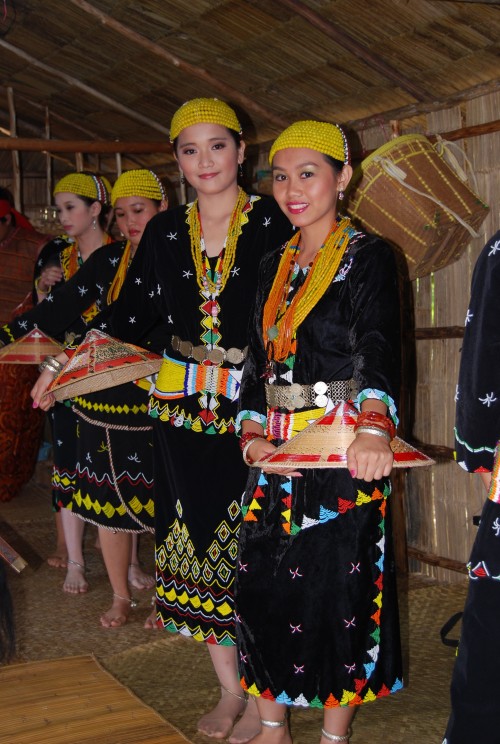
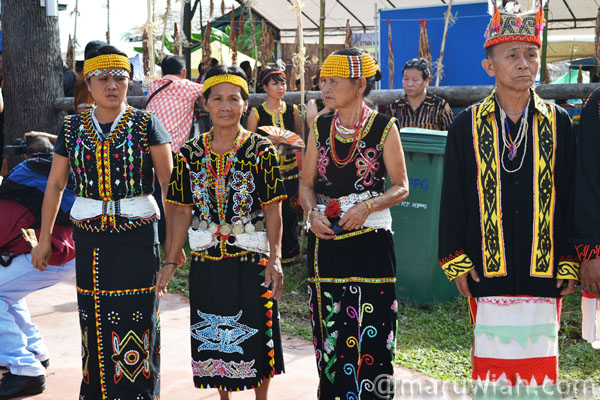
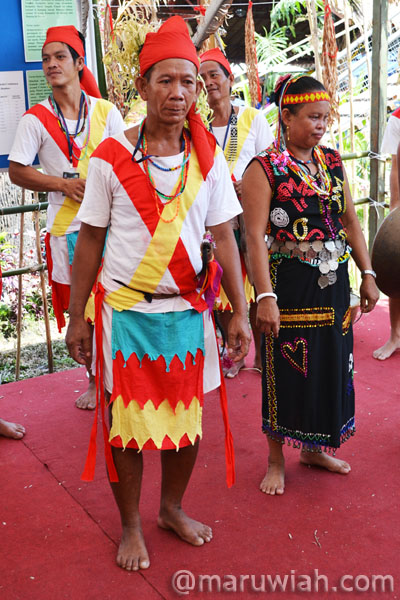
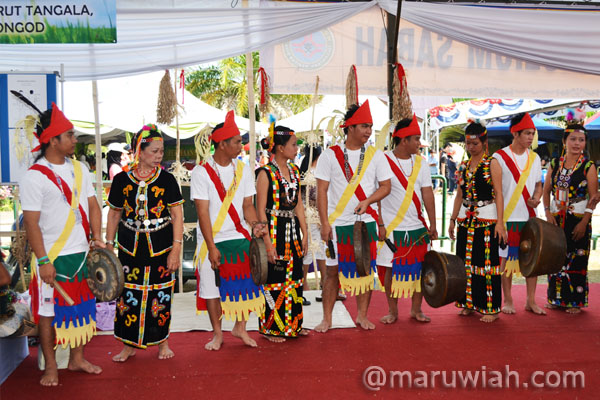








0 Crawlers